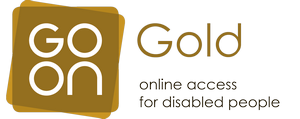- Home |
- Publishing |
- Events |
- Research |
- Register
» Home / Latest News / Publishing news / Guidelines Cover Accessibility For Smart Homes Of The Future
Guidelines Cover Accessibility For Smart Homes Of The Future
Publishing news published: Wednesday 6th March 2013
The latest version of guidelines for accessible ICT systems, including information on making technology-enabled ‘smart homes’ accessible to disabled people, has been released by a leading consultant.
Topics covered include telecommunications, including mobile phones and video phones; financial transactions, including online banking; computing, including software and web accessibility; transport, including passenger information systems; and e-government, including electronic voting.
One area explored in the guidelines is how to increase the accessibility of 'smart homes', where technology systems or services have been built into a home to improve the quality of life for people including disabled and elderly residents.
The guidelines give the example of a lighting system controlled by pressure pads. The system would automatically switch on the relevant lights when the householder gets out of bed and goes to the bathroom during certain hours of the night. Additionally, a safety alarm could be set off if the householder does not leave the bathroom after a specified time.
Recommendations for making "smart home" technology accessible include providing voice-operated or hands-free facilities where possible, and displaying any screen information in a range of formats.
A new inclusion for the latest version of the guidelines is a section on "smart meters" - newer designed electricity and gas meters that offer real-time readings and allow users to easily manage their energy supply. Accessibility issues advised on include positioning and representation of the smart meter display; options for speech output; and design of function buttons.
Gill told Headstar publication E-Access Bulletin that the guidelines were written after he began receiving enquiries from companies asking how to design accessibility into their products. "I often find that the designers are looking for information about accessibility since it has been specified or mentioned by the client (typically a service provider). This does not mean that either party has any clear idea as to what is involved in designing an accessible system, or how to assess it prior to deployment", he said.
The guidelines have recently been updated, and need frequent editing and additions because of constant changes in technologies, legislation and standards, Gill said. New sections on the accessibility of televisions, smartphones and tablet computers are currently being written by Gill and his team.
The guidelines are available at:
http://www.johngilltech.com/guidelines/guidelines_list.htm
Short Link:
http://bit.ly/VqrRIq
NOTE: This story was originally published in the Headstar publication E-Access Bulletin, a free monthly email newsletter on access to technology by all, including people with disabilities. For more information and to sign up, see www.headstar.com/eab







